I am using sjPlot, the sjp.int function, to plot an interaction of an lme. The options for the moderator values are means +/- sd, quartiles, all, max/min. Is there a way to plot the mean +/- 2sd?
Typically it would be like this:
model <- lme(outcome ~ var1+var2*time, random=~1|ID, data=mydata, na.action="na.omit")
sjp.int(model, show.ci=T, mdrt.values="meansd")
Many thanks
Reproducible example:
#create data
mydata <- data.frame( SID=sample(1:150,400,replace=TRUE),age=sample(50:70,400,replace=TRUE), sex=sample(c("Male","Female"),200, replace=TRUE),time= seq(0.7, 6.2, length.out=400), Vol =rnorm(400),HCD =rnorm(400))
mydata$time <- as.numeric(mydata$time)
#insert random NAs
NAins <- NAinsert <- function(df, prop = .1){
n <- nrow(df)
m <- ncol(df)
num.to.na <- ceiling(prop*n*m)
id <- sample(0:(m*n-1), num.to.na, replace = FALSE)
rows <- id %/% m + 1
cols <- id %% m + 1
sapply(seq(num.to.na), function(x){
df[rows[x], cols[x]] <<- NA
}
)
return(df)
}
mydata2 <- NAins(mydata,0.1)
#run the lme which gives error message
model = lme(Vol ~ age+sex*time+time* HCD, random=~time|SID,na.action="na.omit",data=mydata2);summary(model)
mydf <- ggpredict(model, terms=c("time","HCD [-2.5, -0.5, 2.0]"))
#lmer works
model2 = lmer(Vol ~ age+sex*time+time* HCD+(time|SID),control=lmerControl(check.nobs.vs.nlev = "ignore",check.nobs.vs.rankZ = "ignore", check.nobs.vs.nRE="ignore"), na.action="na.omit",data=mydata2);summary(model)
mydf <- ggpredict(model2, terms=c("time","HCD [-2.5, -0.5, 2.0]"))
#plotting gives problems (jittered lines)
plot(mydf)




